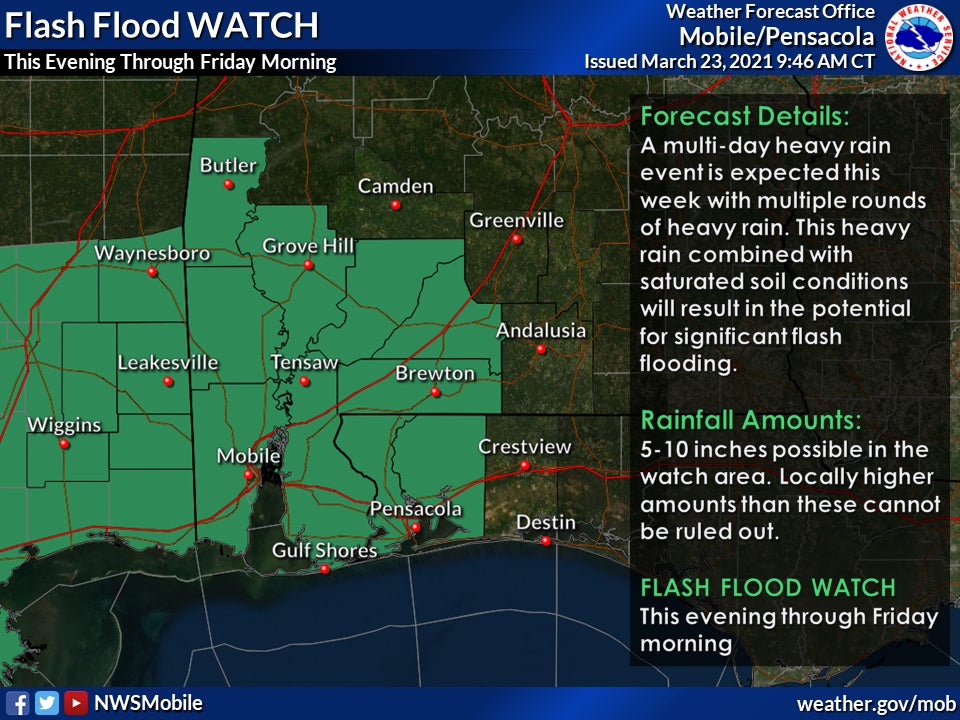Plane crash opens race for office
Published 6:08 am Thursday, October 8, 2009
By Staff
After Ryan De Graffenreid’s plane crash and death in February 1966, the governor’s race was wide open. De Graffenreid would have been governor in a cakewalk but it was now a new ballgame with less than ten weeks until the May election. George Wallace mulled it over for a few weeks, then the amazing story of his wife Lurleen Wallace running for governor came to fruition. George would be her number one advisor.
The idea of George Wallace running his wife, Lurleen, in his place had been tossed out by a few of his cronies as a joke. They never thought of it while De Graffenreid was alive and running. Lurleen would not have run if De Graffenreid had not tragically died, but a real vacuum existed after that fateful February night and the Wallace name was magic. After a few weeks the idea grew on Wallace. He made calls to every county in the state and began to realize that dog might hunt.
George Wallace had captured control of the race issue and that was the issue in 1966. He was known as the foremost segregationist in Alabama and the most pronounced in the nation. His inaugural speech in 1963 declaring, “segregation today, segregation tomorrow, and segregation forever,” had endeared him to the white Alabama electorate. He was also one of the most masterful politicians ever born. His love of campaigning and ability to remember names was unmatched. Politics was his life and Lurleen saved his life because he could not have lived without politics.
Lurleen was a genuinely sweet lady. Her humble background as a dime store clerk in Northport endeared her to Alabamians, most of whom could relate to her. She was gracious and sincere and people fell in love with her. Lurleen had been diagnosed with cancer two years prior to the 1966 election. Although it seemed to be in remission, her health was not excellent. The campaigning was a challenge to her. She did not cherish the spotlight the way George did. Instead, she preferred her quiet time.
Wallace’s total devotion to politics had taken a toll on their marriage and quality of life. Lurleen had been mother and father to five children. However, after Lurleen agreed to run, it seemed to grow on her. She got better day after day. She was a quick study. She grew in political skills on the stump. As the crowds grew you could feel the momentum and surge of popularity that she and George were experiencing. She seemed to thrill to it.
Lurleen’s landslide victory in May was astonishing. She set records of historic proportions for vote getting, some of which still stand 40 years later. Most astoundingly she defeated nine male opponents without a runoff, and it was quite a lineup of opponents. Left in the carnage was an illustrious field of proven political vote getters.
Lurleen received 400,000 votes.
Alabama Attorney General Richmond Flowers finished second, having received the black vote in Alabama who were voting for the first time. Jasper Rep. Carl Elliott finished a distant third. Morgan County state Sen. Bob Gilchrist finished fourth, he tried unsuccessfully to put together the De Graffenreid organization. Dothan businessman Charles Woods ran fifth. Two former governors, John Patterson and Big Jim Folsom, finished sixth and seventh. State Agricultural Commissioner A.W. Todd ran eighth.
She then went on to trounce the most popular Republican in Alabama, Jim Martin, in November by a two to one margin. Martin was a first time Republican congressman from Gadsden who had been elected in 1964. He had all but beaten Lister Hill for a U.S. Senate seat in 1962. He was the strongest Republican in Alabama in 1966 but he was no match for the Wallaces. He was a segregationist, but a poor man’s segregationist will beat a rich man’s segregationist every time. Lurleen Wallace was a very popular lady in 1966. The state fell in love with her.
A young clean cut speaker of the House, Albert Brewer, won a resounding victory for lieutenant governor that year. He would be heard of far more prominently within two years as Lurleen’s fight with cancer was not over. She became sick again within one year after taking office and by May 1968 she had succumbed to cancer. The state was immensely mournful. Alabamians had grown to love the sweet lady who had been a dime store clerk in Tuscaloosa County. The funeral turnout was enormous. The entire state mourned the first female governor of Alabama.




